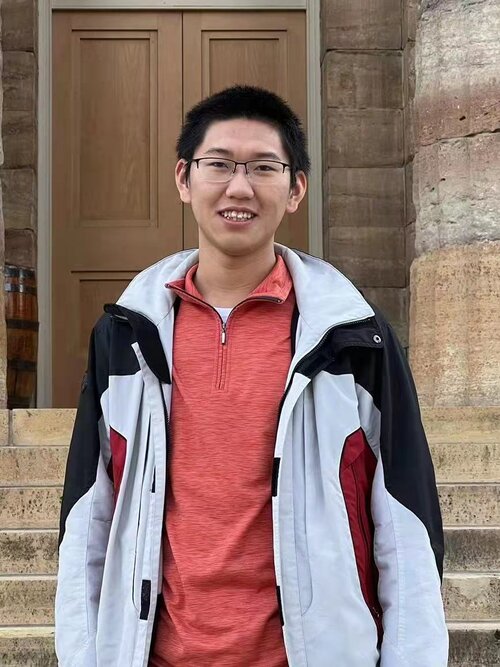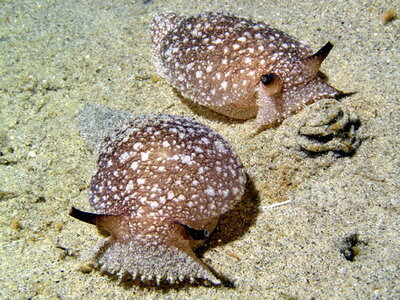
Contact Information
Research Interests
Member of Slug City - R. Gillette Lab
I am a graduate student in Rhanor Gillette group. My research interest is neuronal circuits for sensory-motor control, decision making and learning in sea slugs and octopuses. To study those questions, I am using electrophysiology and computational modeling techniques.
Research Description
Sensory integration in the peripheral nervous system of the mollusks
Many mollusks have an extensive peripheral nervous system (PNS) with partly autonomous sensory-motor networks. In the sea slug Pleurobranchaea, a subepithelial network (SeN) of neurons is embedded in the animal’s oral veil and integrates chemotactile stimuli to output incentive and stimulus location to the central nervous system (CNS). In contrast, in octopus’ arms olfactory information at the suckers is integrated at the of sucker and associated brachial ganglia. Do sea slug SeN and octopus integrate with functionally analogous mechanisms? To explore function in the octopus’s arm, we train the animal with different odors paired with positive or negative rewards, and then record the isolated arm’s behavioral and electrophysiological responses to those stimuli. This experiment may tell whether the arm ganglia can locally store the memory.

Sensory-motor control in the octopus’s arms
Octopuses’ arms are impressive in their flexibility, agility, and independence in motor control, which can inspire the design of efficient soft body robotic arms. However, neuronal mechanisms for single-arm control and multi-arm coordination are still unclear. One hypothesis for their arm control mechanism is that the PNS in the arm has independent abilities to precept and react to environmental stimuli and learn from them through a network between the brachial and sucker ganglia that integrates sensory inputs and motor control, as mentioned previously.
The second plan of this project is study of the control of arm movements by the brain. Compared with Pleurobranchaea, the octopus has a more complex brain highly subdivided into lobes with different functions. However, a similar common design between the two suggests that the octopus’s lobes may express significant functional analogies of Pleurobranchaea CNS.
Simulation of the octopus arm network
Related to the above projects, I am developing a computational model for the sensory-motor network of the octopuses’ arms in a simulated environment. This network is embedded into the peripheral nervous system on the arms and suckers so they can integrate sensory information from the surrounding environment and control the motor response directly without command from a higher unit. This de-centralized model will be able to coordinate the movement of different parts in the arm. To further develop this model, I will add learning abilities derived from short-term and long-term memory formation mechanisms in sea slug Aplysia, so the arm model can learn to distinguish different stimuli and develop spatial recognition abilities based on that.
Education
Neuroscience Program - 2021 - now
B.S Biological Sciences - ShanghaiTech University. 2021
Awards and Honors
Graduate College Conference Travel Awards (2025)
Outstanding Teaching Assistant in Molecular & Cellular Biology (2024)
Graduate College Conference Travel Awards (2023)
Thomas and Margaret Huang Award for Graduate Research (2022)
International Genetically Engineered Machine competition, silver medal (2019)
Courses Taught
Teaching Assistant
MCB 462: Integrative Neuroscience. 2023 - 2025
MCB 461: Cell & Molecular Neuroscience. 2023
MCB 460: Neuroanatomy. 2024
Recent Publications
Zhao, Q., Gribkova, E., Shen, Y., Cui, J., Naughton, N., Liu, L., Seo, J., Tong, B., Gazzola, M., Gillette, R., & Zhao, H. (2024). Highly stretchable and customizable microneedle electrode arrays for intramuscular electromyography. Science Advances, 10(18). https://doi.org/10.1126/sciadv.adn7202
Norekian T, Liu Y, Gribkova ED, Cui J, Gillette R (2024) A peripheral subepithelial network for chemotactile processing in the predatory sea slug Pleurobranchaea californica. PLOS ONE 19(2): e0296872. https://doi.org/10.1371/journal.pone.0296872
Gribkova, E. D., Lee, C. A., Brown, J. W., Cui, J., Liu, Y., Norekian, T., & Gillette, R. (2023). A common modular design of nervous systems originating in soft-bodied invertebrates. Frontiers in Physiology, 14. https://doi.org/10.3389/fphys.2023.1263453